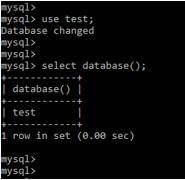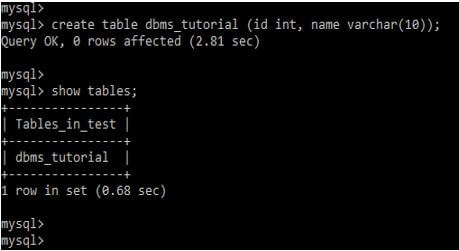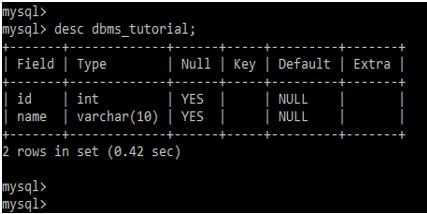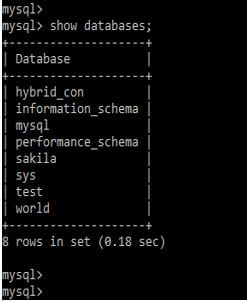DBMS Tutorial
Home Data Science Data Science Tutorials DBMS Tutorial
DBMS
DBMS Tutorial
DBMS Tutorial teaches us the fundamentals of databases. We can design the DBMS tutorial for beginners as well as professionals. The database management system (DBMS) is the software used to manage the databases of specific applications. There are multiple types of DBMS software available, like MySQL, PostgreSQL, Oracle, MSSQL, and many more. The DBMS tutorial includes topics such as relational modeling, the ER model, DDL, and DML queries.
Overviews of DBMS Tutorial
DBMS is known as a database management system and is used to store and retrieve data for applications. This tutorial will explain DBMS basics such as data schemas, data models, relational models, ER models, storage, database design, file structure, and many more. The DBMS is a collection of interrelated data that is used to retrieve, delete, and insert the data effectively.
The DBMS is also used to organize the data into specified tables, schemas, views, and reports. DBMS provides an interface to perform multiple operations, like updating, creating, and storing data in a specified database. The database management system (DBMS) ensures database security. In DBMS, we can achieve data consistency. DBMS allows us to perform a variety of tasks.
Why do we need to learn DBMS Tutorial?
A DBMS allows us to manage data in a tabular format. In DBMS, we can overcome the deficiencies of traditional data. The following are the characteristics of a DBMS. The DBMS also employs attributes and behaviors in its entity format. For example, a college database uses the college student as an entity, and their age is an attribute.
- Table structure: in DBMS, we can define the table structure. In DBMS, we can store data in tabular format.
- Application and data isolation: the system of the database is different from its data. The database will contain the active entity, whereas the data is passive. Based on this, the database organizes the data. DBMS is also used to store metadata, which contains information about the data and how it is processed.
- Less redundancy: DBMS splits relations that contain duplicate values using normalization redundancy techniques. Normalization is a scientifically rich and mathematical process that was used to reduce data redundancy.
- Consistency: This is a state where each relation in the database will remain consistent. DBMS will provide consistency when compared to techniques and methods that detect an attempt to leave the inconsistent state.
- Language: Because DBMS is a query-level language, we can use DDL, DML, and TCL queries in a DBMS. This will make the language more efficient to manipulate and retrieve the data. We can apply multiple filters, and we can use filter options to retrieve specified data from the whole table. It is not possible in the file-processing system.
Applications
DBMS is a collection of data, and we can say that data is a collection of figures and facts that were processed to produce the information. The data will represent the recordable facts. Data aids provide information that is based on facts. If we have data on student marks, then we can determine the highest and lowest marks.
The DBMS stores the data so that we can retrieve it faster and also produce the specified information. Below are the applications of DBMS, as follows:
- Follows the properties of ACID: The DBMS will follow the concept of ACID properties. It includes isolation, durability, atomicity, and consistency. We can apply the concept of database transactions, which manipulate the data in the database. The acid property will help the database stay healthy in multi-transactional environments.
- Concurrent and multiple user access: We can access the single database multiple times and concurrently. The DBMS will support the multi-user environment, and it will allow us to manipulate and access the data in parallel. It will contain restrictions on transactions when it deals with data, but users are unaware of them.
- Views: The DBMS provides views to users. The user in the sales department sees the database differently than another person in another department. This DBMS feature allows you to concentrate on a single view as needed.
- Security: This offers security for the specified user to access the data of other users. DBMS will offer methods to impose constraints on entering the data into the database and retrieving it at a later stage. DBMS will provide multiple security features to users as well as various views and features.
- Administration of users: We can manage and monitor the data in the DBMS. DBMS contains data security and will also deal with concurrency control.
Example
There are multiple types of DBMS databases available. In the below example, we use the MySQL database as follows: To create the database in MySQL, we can use the create database command. In the below example, we have created a test database as follows:
create database test;To create the table in the specified database, first, we need to use that database. In the below example, we have used the test database as follows:
use test;We can create the table by using the create table command. In the below example, we have created the dbms_tutorial table as follows:
create table dbms_tutorial (id int, name varchar(10));The desc command must be used to describe the table structure. In the below example, we described the structure of the dbms_tutorial table as follows:
desc dbms_tutorial;To inspect all databases, run the show databases command. The below example shows how we can list all the databases as follows:
show databases;Pre-requisites
To begin this tutorial, we required a good understanding of computer concepts such as memory, algorithms, and data structures. Because DBMS is simple to learn, we only needed a basic understanding of database concepts. We also required knowledge of the hardware, storage, and architecture of the computer.
We needed to understand the fundamentals of SQL. The knowledge of SQL queries is an added advantage. To use the DBMS, we need to install any of the database software on our system. To install the specified database first we need to download it from the website.
Target Audience
The DBMS tutorial is useful for students studying IT and computer science, as well as those interested in learning advanced and fundamental DBMS concepts. This tutorial acts as a handbook for professionals and recent graduates.
This tutorial is also helpful for database administrators, end-users, and application programmers. This tutorial is also helpful for new graduates who are seeking a job. It is also helpful for graduate students.
Conclusion
This tutorial will explain DBMS basics such as data schemas, data models, relational models, ER models, storage, database design, file structure, and many more. The database management system (DBMS) is the software used to manage the databases of specific applications. There are multiple types of DBMS software available, like MySQL, PostgreSQL, Oracle, MSSQL, and many more.




